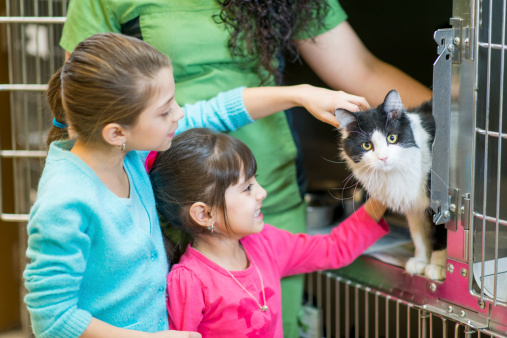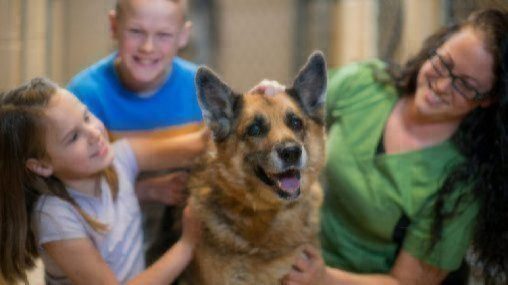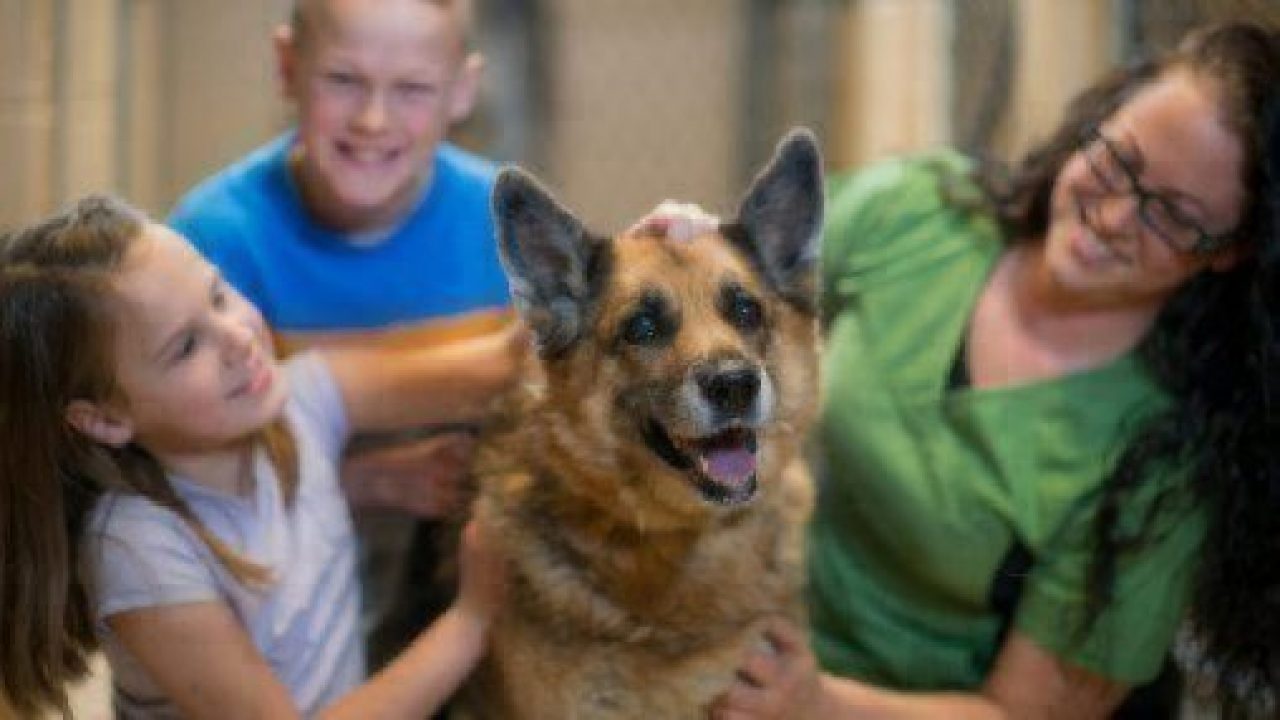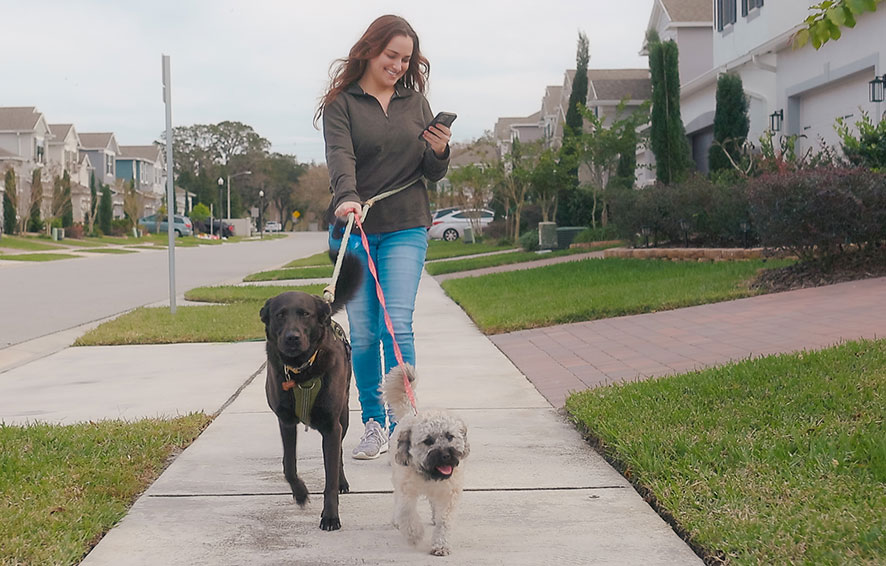
If you’re a pet parent or even a prospective pet parent, you probably love animals and want to see them all find warm, safe homes. The thought of pets who are neglected, hungry, and frightened in a little cage is a huge emotional driver for people to adopt; however, many animals surrendered to shelters or found on the street can be older, less desirable, or in need of ongoing medical care. These pets tend to be overlooked, even by the majority of pet-loving humans looking to adopt a forever friend.
One organization that takes the time to highlight harder-to-place animals to help them find their perfect home is Washington’s Pawsitive Alliance. Their Why Not Me? (#WhynotMEpets) program is dedicated to give homeless cats and dogs who need more care and attention a chance to find a home as quickly as possible. These are the ones left asking “Why Not Me?” – vulnerable pets who are harder to home such as those who have been homeless for an extended time, senior pets, those with medical needs and/or behavioral issues, pets who aren’t thriving in the shelter environment, and those that make up a large percentage of the shelter population, such as bully mixes. Additionally, cats and dogs that suffer from a “black pet” stigma, shy pets and those who must be the only pet in a home aren’t easy to find forever homes for either. Healthy Paws believes strongly in the work that Pawsitive Alliance does, as we are proud to support their program again this year.

“We try tremendously hard to get hard-to-place pets a second look by adopters,” says Amy Ferguson, Executive Director of Pawsitive Alliance. “It’s challenging when those pets get left behind – sometimes for years. Exposure on social media and TV helps a great deal, but pet parents still don’t necessarily go to a shelter thinking they’re going to adopt a senior cat or a Pitbull mix. We have a lot of stereotypes to overcome.”
According to Mercola, senior shelter pets across the U.S. are the least likely to be adopted, perhaps due to a variety of reasons, however the reality is that older pets are less destructive, more relaxed, and can still learn new tricks. The Humane Society’s article Old Dogs (and Cats), Still Great Tricks says, “it’s much easier for potential adopters to get a sense of a mature animal’s qualities—including size, temperament, and personality—and to make a more informed decision based on their expectations.” Also, many senior-savers report that older pets are full of gratitude upon adoption. “They truly seem to understand what you have done for them,” continues Ms. Ferguson. “These frosted faces are so full of love and loyalty; most all pets are upon adoption, but we see it so strongly in older dogs and cats.”
For pets who need ongoing medical care, adopters should realize that managing health conditions comes with pet parenthood, no matter if you’ve adopted a puppy, kitten, differently-abled or senior pet. Unfortunately, millions of animals are put down in shelters every year simply because they have special needs and are deemed “unadoptable” as such. Many of these “less adoptable” pets spend up to two years waiting for a forever home, more than four times the average wait. Granted, pets with special needs need a special parent with the resources and patience to take care of a terrific tripod (a pup with three legs) or a diabetic cat who needs daily insulin. However, it’s important to remember that those with special circumstances make fantastic companions, regardless of their situation.

And of course, most all dog lovers and owners know of bully breed issues at shelters, or even larger dogs perceived to be aggressive (“guard dogs” that look like Rottweilers, Dobermans, or German Shepherds). There are considerable barriers to overcome when adopting these pups; in addition to advocates overcoming prejudice, the person adopting these dogs will need to have considerable room and energy for exercise, and will need to understand the social hurdles that come with adopting a dog that people might be scared of. And of course, not all these pups need to be hiking buddies or agility athletes; each dog is an individual. The most important part of the puzzle is the pet parent, who will not just be rescuing the dog but will also serve as advocate for the breed.
Other hard-to-home dogs and cats can be shy or fearful – shelters can be a very hard environment for some animals, and rightfully so – or even the “wrong color.” Many people perceive black cats to be bad luck, and black dogs to be evil. There’s even a term for it: “Black dog syndrome” or “big black dog syndrome” is where black dogs are passed over for adoption in favor of lighter-colored animals. “Remember – it’s what’s on the inside that counts,” says Ms. Ferguson. “You just need your personalities to click. And then by giving an animal a chance, you’ll get to see them bloom.”
If you’re still not sold on helping out a furry face who’s seen their fair share of obstacles, maybe you could do it for you. Imagine how good you’ll feel giving an older dog, a bull breed, or a pet with special needs a chance. Plus, it’s been scientifically proven that a pet’s unconditional love affects us in wonderful ways – from emotionally to physically by lessening our feelings of loneliness and getting us outside for a walk.
After adopting your new buddy, you’ll want to buy toys, bedding, leashes, food — and you’ll need to pet-proof your home and ready the family for your new member. But have you considered pet insurance as well? By enrolling as soon as you can, older dogs and cats can be covered through many of life’s (mis)adventures. You can start protecting your pet today by getting a free quote.







